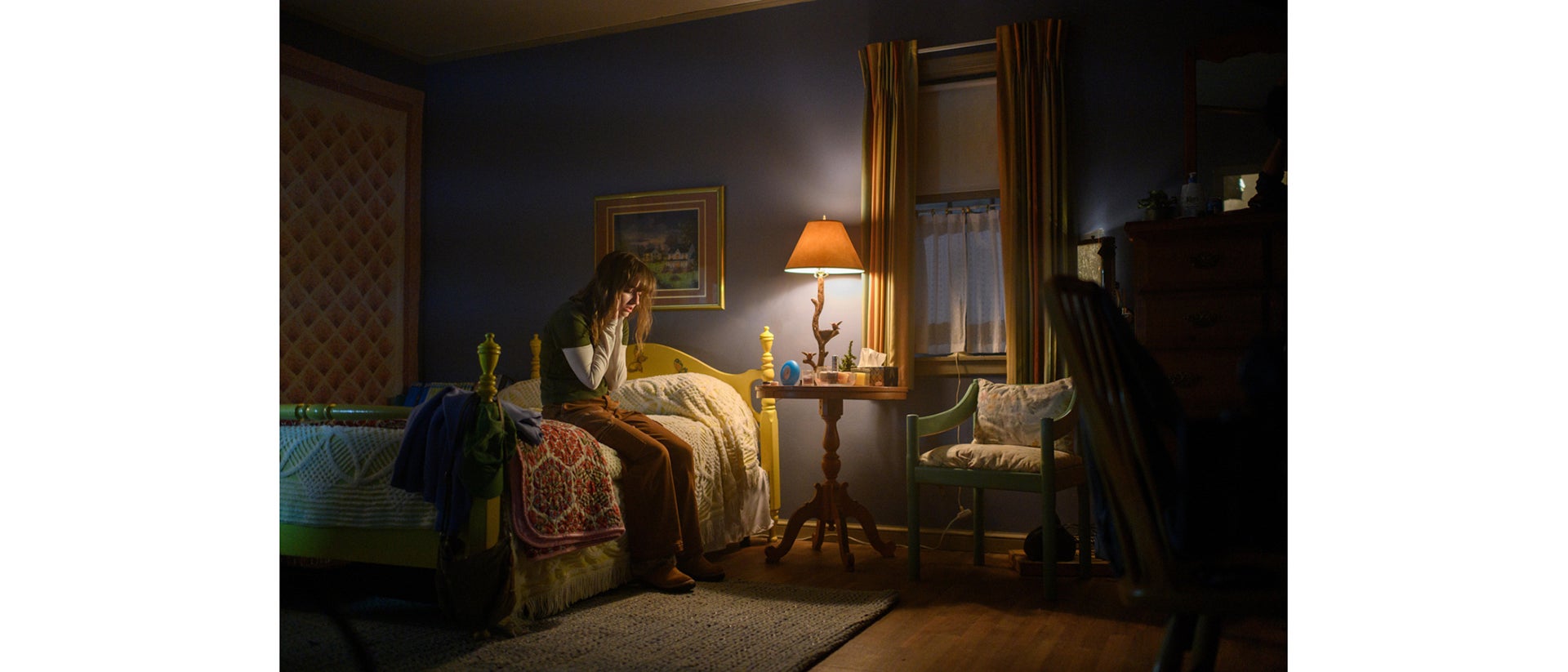
11-12-2021 - Case Study, Gear, Technology
Checco Varese, ASC Illuminates “Dopesick”
By: Suzanne Lezotte
Based on the book by Beth Macy, this haunting eight-part series details the introduction and rise of a new pain killer in the 1990s, OxyContin, branded and sold by Purdue Pharma as a ‘healthy’ opiod, with the promise that less than 1% of those who use it will become addicted. The stories are not unfamiliar of the saturation into the healthcare market and consequently, the addiction. “Dopesick” shows both an intimate portrait of those who became addicted, as well as the machination behind big pharma’s push to sell the drug under deceptive branding.
Checco Varese, ASC, who had completed the series “Them,” for Amazon, began shooting “Dopesick” in Virginia soon after. “’Dopesick’ is a very particular show about the opioid epidemic and the tragedy that comes of it,” said Varese. “The show basically exposes three worlds. There are those who became addicted when their doctor, whom they put their trust in, gave it to them - some doctors prescribed it with good faith, some doctors prescribed it for kickbacks. The other world is that of the civil servants who tried to get ahead of what was happening, and then there is the third world of the Sackler family, the owners of Purdue Pharma, who were pushing these drugs into everybody’s world. This is a story of capitalism and greed, which meant we needed it to be cool and gritty.”
Created by showrunner/writer Danny Strong, the show was directed by Barry Levinson, Michael Cuesta, Patricia Riggen, and Strong finished the final two in the director’s chair. “I collaborated many times with Patricia,” explained Varese, “but the initial approach began with Barry Levinson, who established the look of the pilot, and Danny, who wanted a hyper-realistic look, to feel that you are right there with them.” Varese said the look was “not unlike” ‘The Deer Hunter,’ (shot by Vilmos Zsigmond) with the cold steel mill and the blue-collar, working class people, and ‘The Insider’ (photographed by Dante Spinotti) with extreme close-ups, an out-of-focus background and a single light coming through the window. I felt these were two paramount examples of the world we wanted to portray.”
Varese also utilized references from production designer Neil Spisak, as well as photos taken in Afghanistan from still photographer Steve McCurry, who employed a monochromatic look and one element of color. “Danny Strong wanted to keep it as real as possible, and my challenge was not to overdo the pain and suffering.” He explained that exposing the characters who become addicted needed to be relatable to the audience: “They trust the system and their doctors. I wanted to show the desperation, similar to what I did in the ‘80s working in news and documentary.”
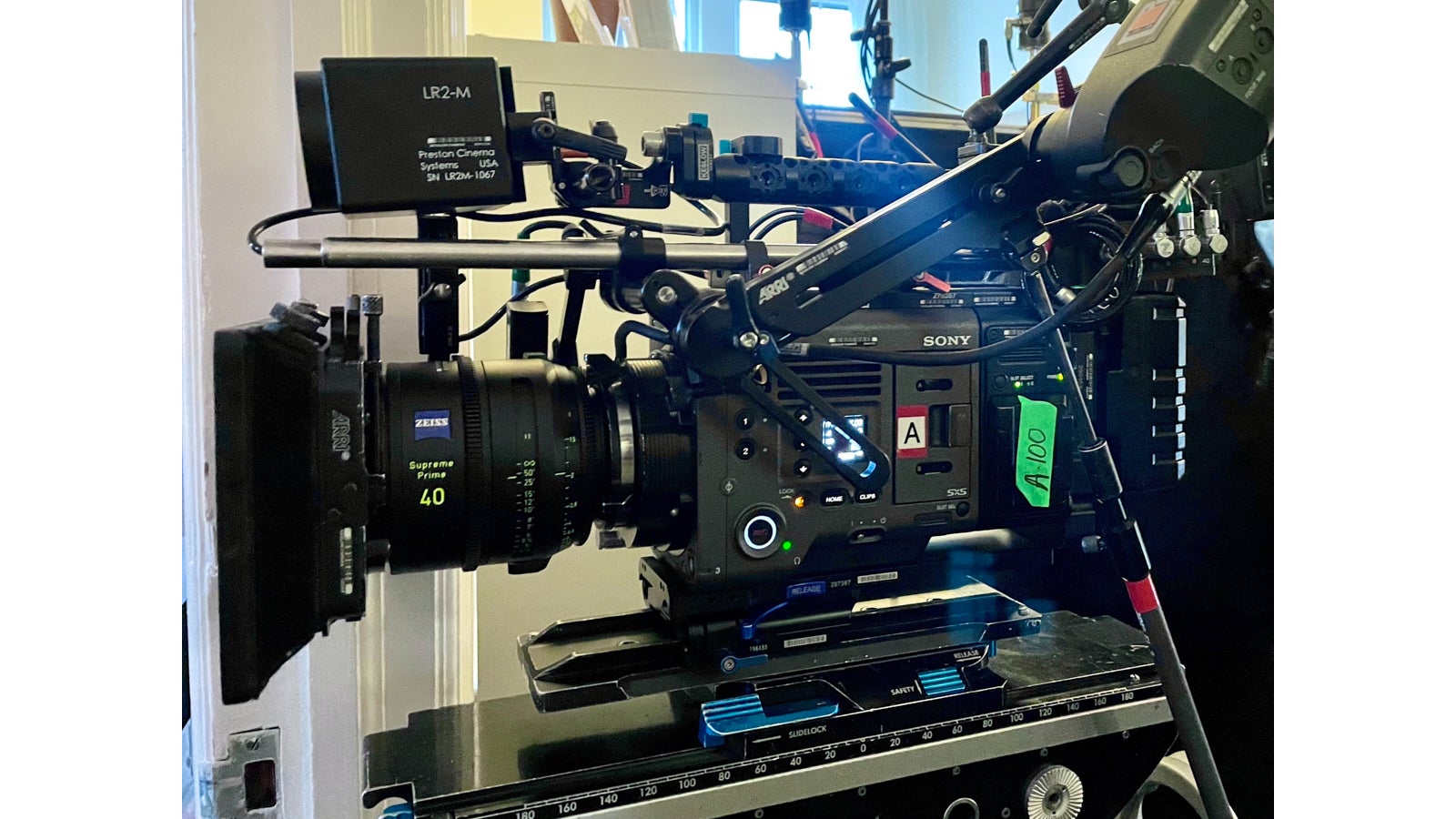
Varese chose Sony VENICE and the ZEISS Supreme Primes for his main camera package because “the combination gave me a shallow depth of field if I wanted it, and a gentle and almost transparent look, not fabricated. I also had the ability to go from a day exterior to a dark exterior just by changing a few settings. The ZEISS lenses and Sony sensor together work in synergy to achieve that. For this show, I wanted the audience to become engaged in the characters, not the artistry of the show.”
Utilizing his colorist, Stefan Sonnenfeld (Company 3), Varese and his DIT Daniele Colombera worked with him on the look of the show. “Because we were familiar with Sony VENICE from working on ‘Them’ together, we didn’t create a new show LUT”, explained Colombera. “We were very happy with the previous color pipeline that we used and, since we changed lenses, and the format was now full frame (with 2:1 aspect ratio instead of 2.39:1), those elements directed the look in a more realistic way, very different from what we did on ‘Them.’”
As in “Them”, the Show LUT we used gave us the freedom to create all the looks we wanted using CDL values, and the flexibility to go one way or the other, from the claustrophobic coal mines to the opulent world of the Sackler family.”
Varese added that Sonnenfeld ended up working with five different layers of LUTs for the final DI. “The Show starts with this beautiful cold Appalachian winter: it’s very bucolic with snowflakes falling. The snow has a hint of blue and the skin tones are healthy. When the drugs hit, the blue becomes greener, and the yellow becomes greener. Then we go into the world of the civil servants, seen as hardworking, white-collar, proud prosecutors. That light is very subdued, the windows are not that bright and the sun is an 18K.”
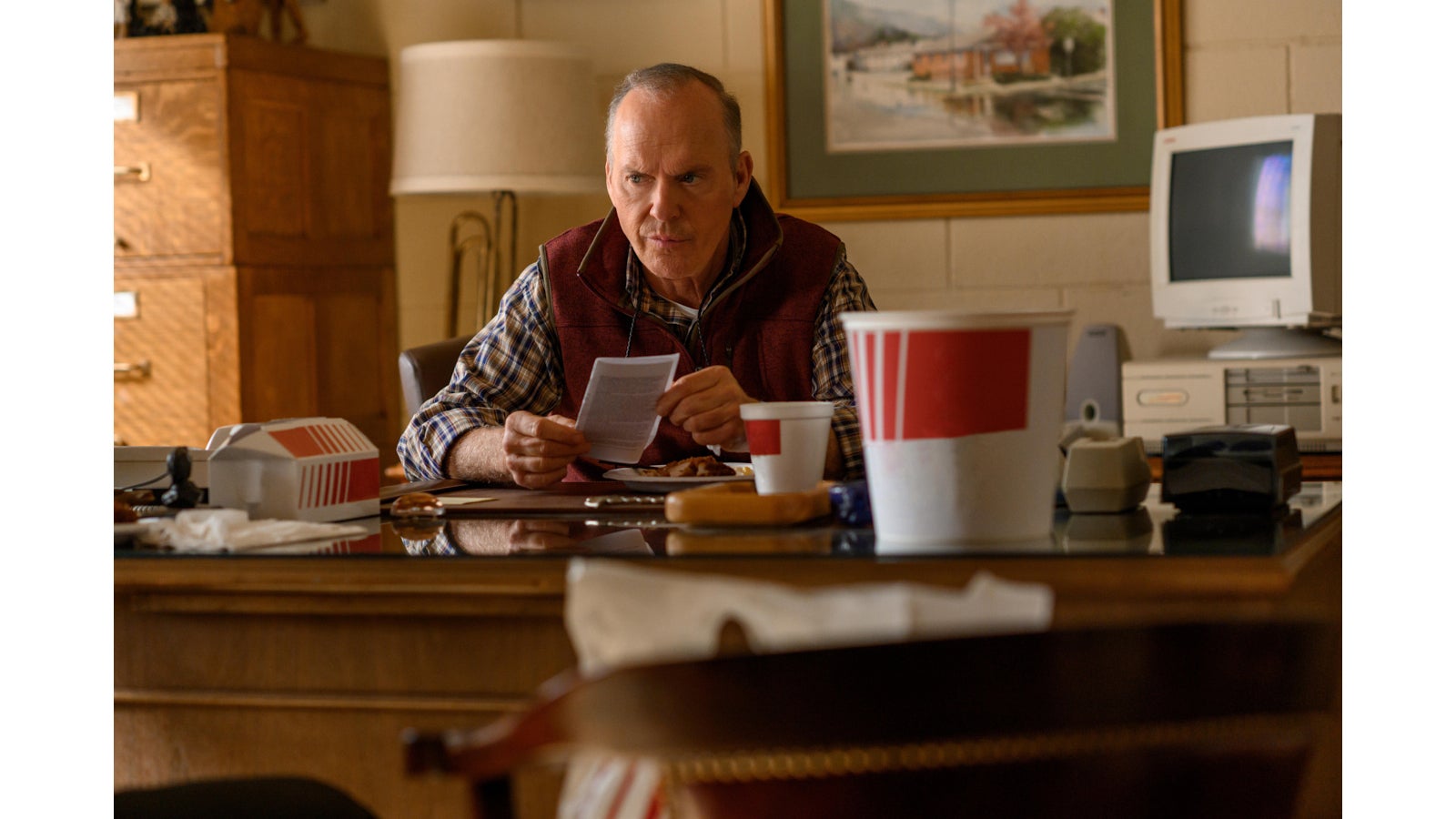
Dr. Samuel Finnix (Michael Keaton), (Photo by: Antony Platt/Hulu)
For on-set monitors, Colombera used his own Sony OLED monitors, “because it’s arguably the only technology available that can render accurate colors with almost infinite contrast ratio” said Colombera. “With Sony cameras, ZEISS lenses and Sony calibrated displays Varese, Levinson and I could rely on a very faithful rendition of the colors. It was a good marriage of cine products.”
With so many night exteriors on location, said Varese, “we were very nimble, thanks also to the ability of the Sony VENICE to dig into the darkness, yet keeping rich blacks. It’s a beautiful thing to count on, because Sony VENICE works very well at high EI settings, without sacrificing dynamic range or color depth.” In one scene, Dr. Finnix leaves a patient’s house and drives back into town. He only drives two blocks, “but it’s an extraordinarily expensive shot,” said Varese, “so we chose not to light the universe. We got permission from the Power company to hang some small LED fixtures on the poles along the street, in addition to the existing streetlights. We also carefully positioned a couple of larger lights at the end of the road, lighting the train station and a little bit of the mountain in the back. We used 10 lights, maybe 15 lights total for a large night exterior. In most cases we played with the foreground exteriors, and then knew the Sony VENICE would allow us to dig into the dark. The miner’s town, which was shot in Clifton Forge, VA was a town with very few lights in the streets. One of the exceptions, was the world of the Sackler family, where we ended up using bigger light sources to light museum exteriors, the party at Richard Sackler’s mansion, etc.
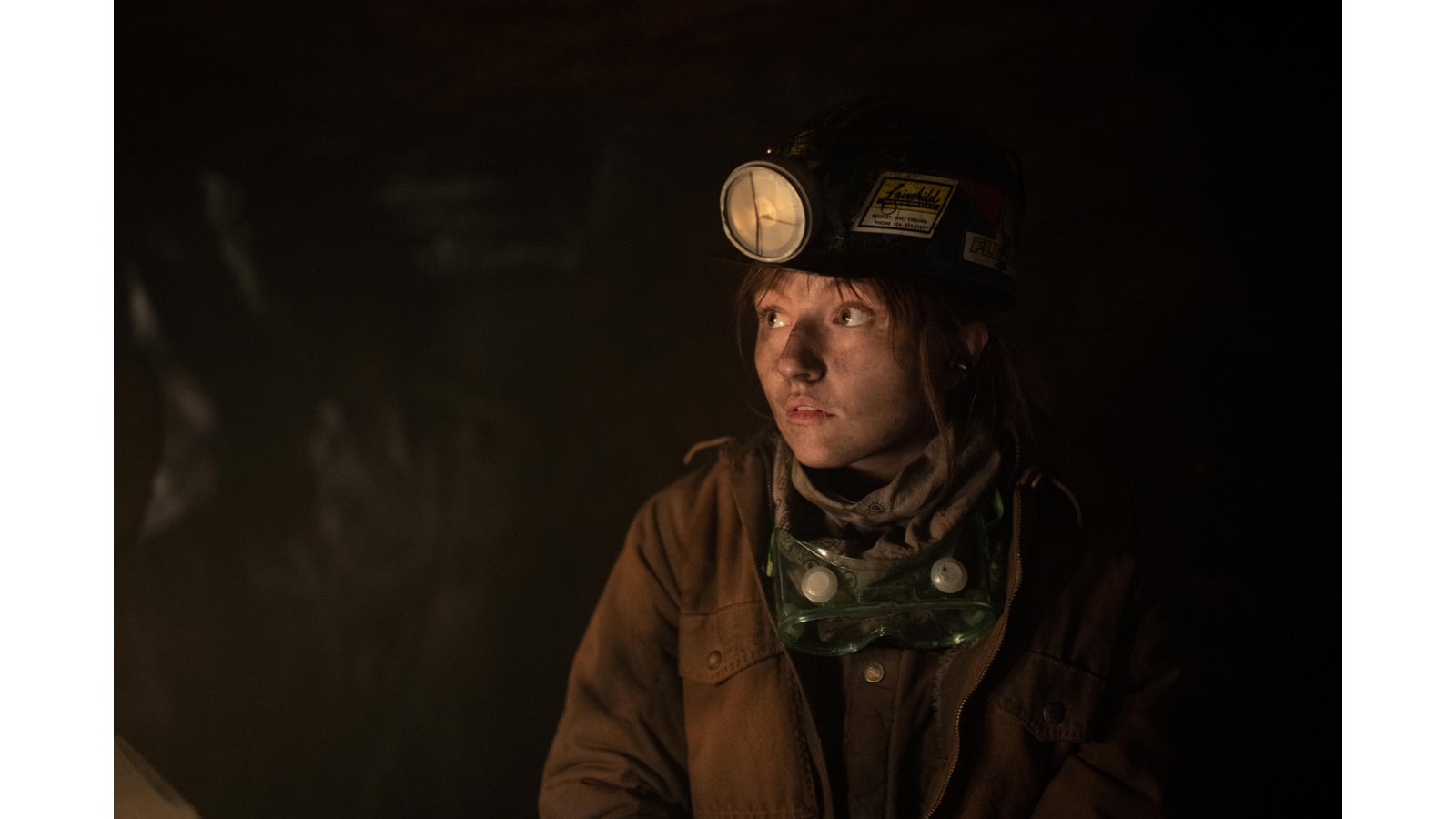
Betsy (Kaitlyn Dever), shown. (Photo by: Antony Platt/Hulu)
Varese chose to light the ‘Big Pharma’ scenes with large sources, in warm, rich tones. “Sometime we used a gold checkerboard bounce that reflected the light, adding a shine to the surfaces. You see it in the perfect fingernails, the perfect makeup. We kept it a beautiful, shadowless world.” That world was in stark contrast to the lives of the people, and particularly the miners. Shooting the mine scenes, “was so familiar to me: let’s use the hand lamps and the one big source, and make everything dark,” recalled Varese (whose acclaimed work on “The 33” details 33 miners underground for 69 days). “I didn’t know that I could add anything to what my gaffer, David Lee, and key grip, Rick Stribling, had done in the past. But we ended up building each head lamp with tungsten bulbs and tweak it with a dimmer, adapting each of their levels to the specific degree of smoke and dirt in the mine. We avoided lighting the walls as much as possible, since they were supposed to be black like coal. It wasn’t easy, but it felt familiar. It was really about the harshness of it, and the skin tones.”
Colombera praised the ND filters in the VENICE, especially in the coal mine. “Surprisingly, even though we were shooting at low-light levels (but at EI 2500) in dirt and dust, we didn’t have to worry about those elements affecting the filters when we used them, since they’re all internal. What was really nice is the speed and no unwanted reflections. They are full spectrum NDs so you don’t have any visible color shift like it can happen with other ND filters that are not so neutral.”
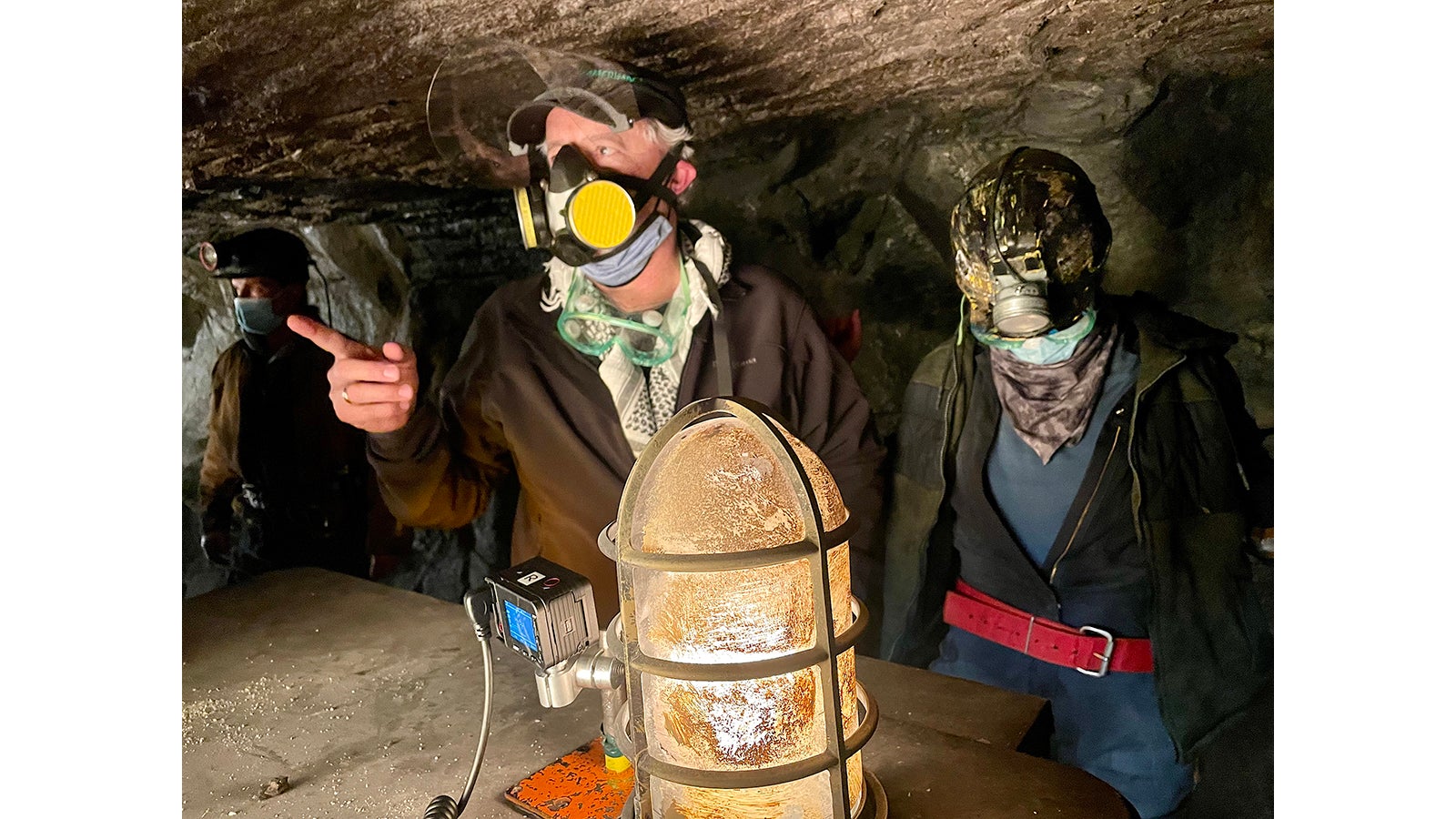
Sony RX0 II in place in the mine
That was not the only Sony camera on set, though; on “Dopesick” we used the Sony RX0 II as a crash/specialty cam, which Colombera suggested to Varese “because it is a great little action cam that, despite its tiny size, shoots 4K and has a ZEISS lens. Since we were already shooting Zeiss and Sony that ended up being a wise choice. The camera mounts a 1” sensor and a 24mm equivalent lens, which thankfully is not as wide as other action cams, intercutting really well with the Sony VENICE and full frame lenses. The native EI in S-Log2, S-Gamut color space is 1000, which is great but requires a lot of ND filtration when shooting in day exteriors.” Varese agreed and purchased the camera. “If it had broken, it would have broken my heart, but not my bank,” Varese joked.
The RX0 II was used in a scene where Dr. Finnix runs a red light and gets into a car crash. Colombera explained, “I was able to grade it the same way as I did with the Sony VENICE. I converted S-Log2, S-Gamut to our working color space S-Log3, S-Gamut3.Cine, and I was able to achieve incredibly matching images with minimal color correction. When we played back that shot of the accident, it was powerful and wasn’t jarring, because it matched all the other camera angles. “Varese was happy enough with those images that he chose to insert the RX0 II wherever he could, said Colombera. “We shot with the RX0 II during an explosion in the coal mine, so we could get a close up of the actor’s face. For safety reasons in all the stunt scenes the camera was always locked off, never with an operator. Because it’s so tiny, you can hide it and conceal it, and get that extra coverage even when the camera is technically in the other cameras shot.”
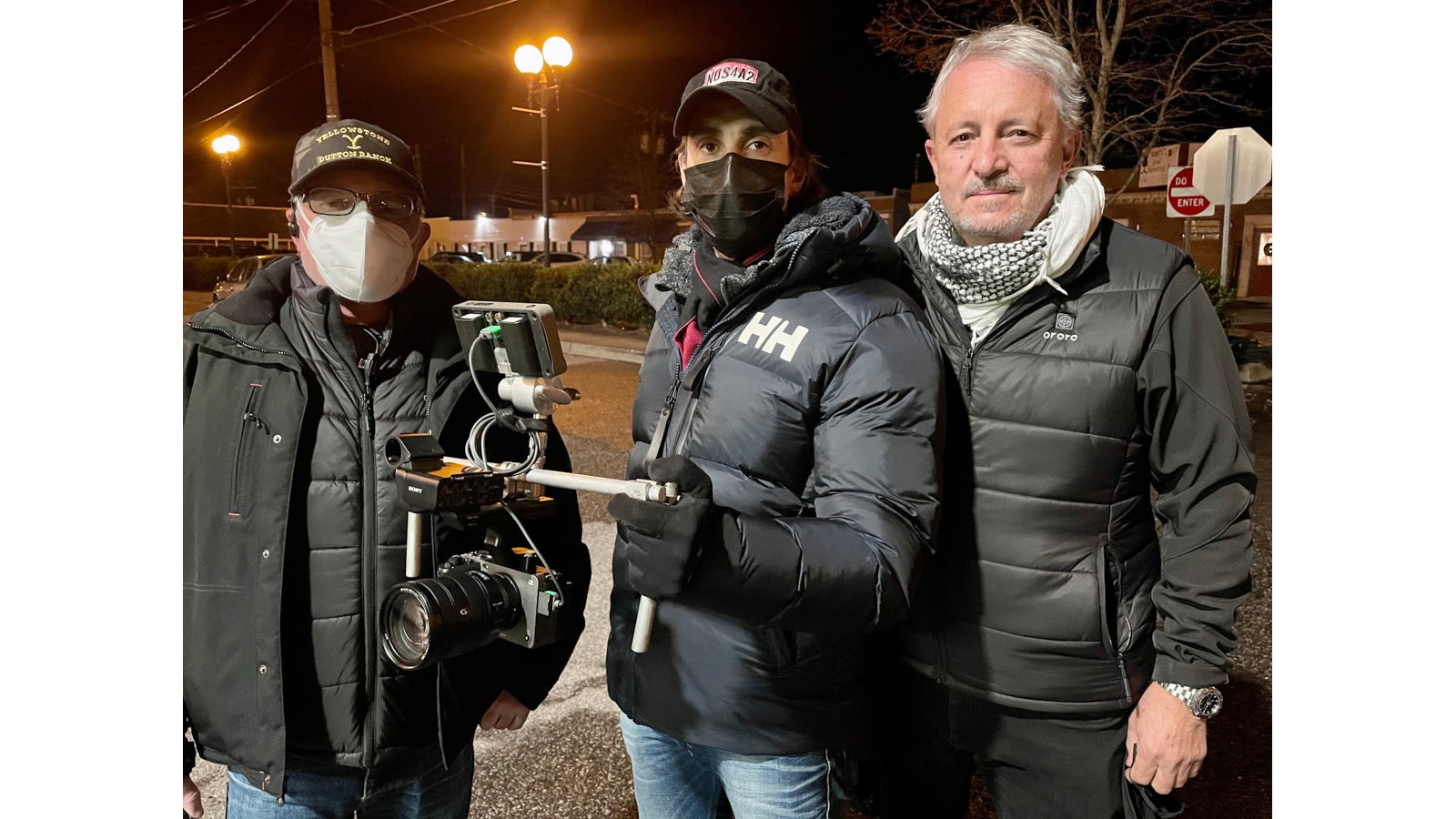
Powerful but compact FX3
Halfway through filming, the Sony FX3 became available for Varese to test. “It looked liked a slim DSLR camera, so I thought that was interesting to test it on "Dopesick." I leave the technicalities to Daniele, but for me, it’s another tool in my paint set. It’s a small brush, very handy, and allows a filmmaker to be emotionally attached. You can walk behind an actor in a crowd and they don’t see it.” One particular scene they used it for was designed by camera operator Joseph Arena and Varese. A break-in at a pharmacy occurs, and the idea was to show the desperation of the character looking for drugs. Originally, they were going to shoot the whole scene with the VENICE, but when they got the FX3 in their hands, they redesigned the shot. After the rehearsals, they realized they could hand off the FX3 and create a seamless shot from outside the pharmacy, through the broken window and all the way to the back, without changing camera angle. “We literally had one camera on one side of the counter, the kid jumps, the A-Cam operator Joseph Arena SOC hands the camera to the other side, where our other cameraman Joe Cicio picks it up and continues the shot. It’s a seamless shot; The scene starts with the Sony VENICE, then switches to the FX3 and then and back to the Sony VENICE. You will be really challenged to see that it’s a different camera,” said Varese.
Colombera explained that they tested it side by side with the VENICE, “and we realized that the camera was fairly close to what VENICE was delivering. The color space is the same as the VENICE, and we appreciated the fact that we were getting an image that was close in many aspects: same frame size, same color space, and in many cases, same ZEISS glass with T* multi-coating technology.”
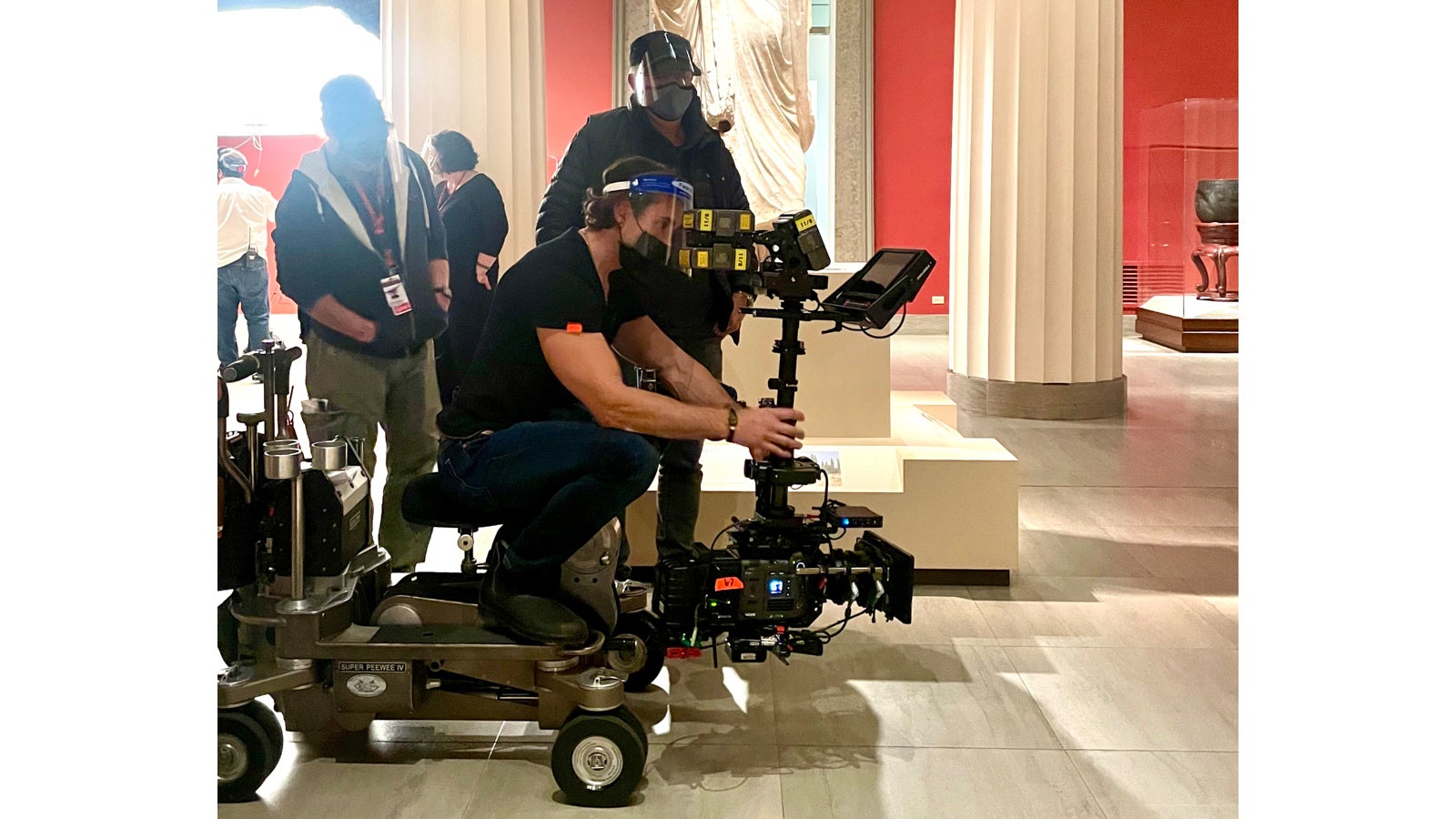
“On a plus side, the form factor of that camera is what we were really into. We liked the idea of a camera that was very compact and lightweight.” Also, since because it was so dark inside the pharmacy, which was lit only by an emergency light and an alarm going off, we set the camera at ISO 12,800, the second “secret” native EI base after 640, Colombera explained. “We also used a Sony zoom with OSS optical stabilizer and we enabled the auto-focus tracking feature. The camera also has a 5-axis stabilization in the sensor, so that was another reason why we were able to achieve that shot. Since Arena was following the burglar while he was running inside the pharmacy, the scene was extremely fast and shaky and he purposely didn’t use a gimbal. We tried to convey the feeling of that moment, the drama of it, yet we needed the image to be readable and in focus. Varese says “We were impressed by the dual sensitivity of the FX3” and continues, “to be able to shoot at 12,800 opens a completely new world to me. It’s even brighter than the naked eye can see. It’s like a cat’s eye, seeing in the dark.”
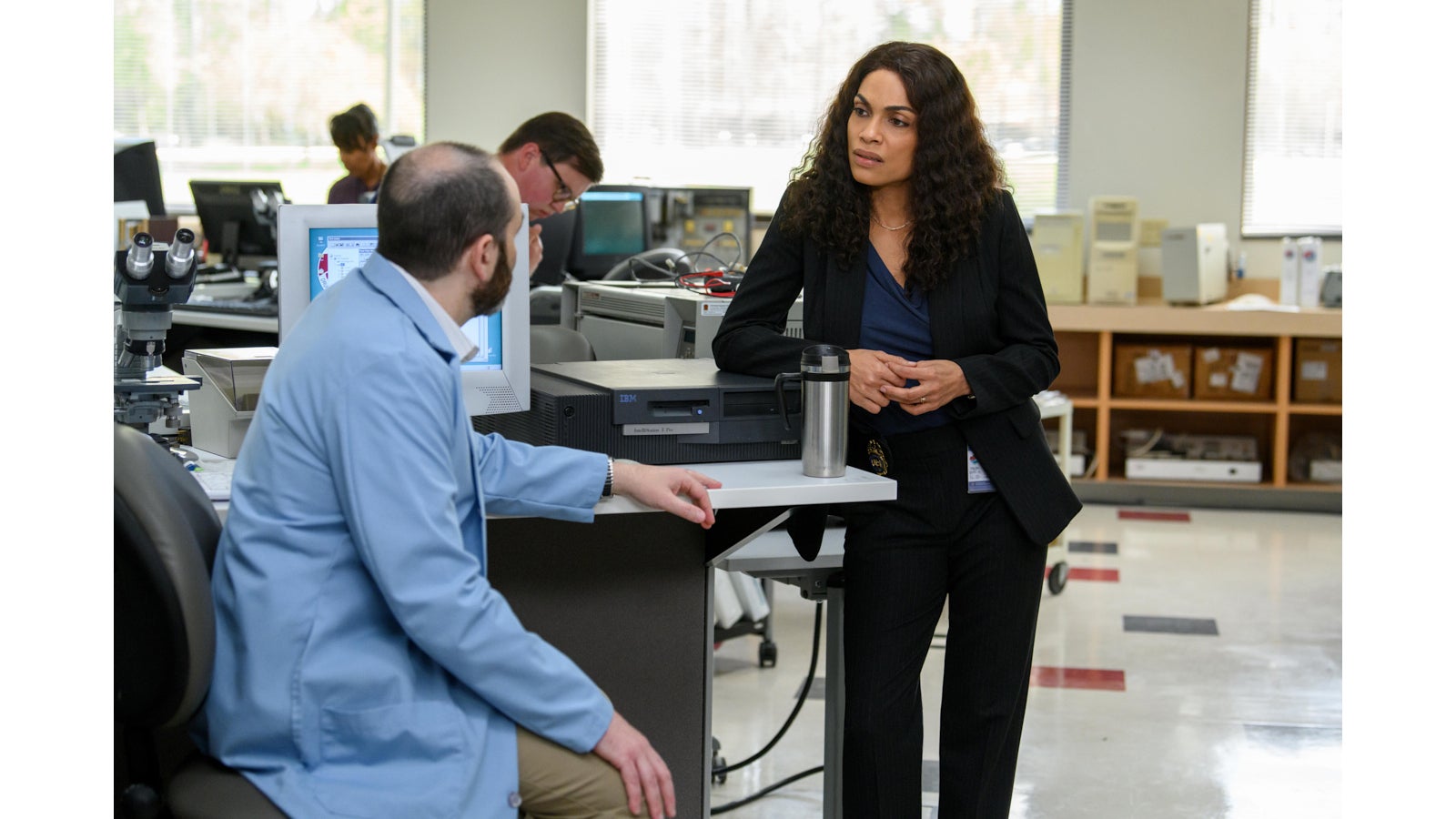
Bridget Meyer (Rosario Dawson), shown. (Photo by: Gene Page/Hulu)
In order to get validation that they were getting matching images, the FX3 footage was sent to Stefan Sonnenfeld at CO3, to compare it against the Sony VENICE footage shot at EI 2500 with ZEISS Supremes. The feedback we got from Sonnenfeld was that it looked great” said Colombera. Varese and Joseph Arena continued to shoot with the camera, as did John Turner, B-camera operator who used the camera for some night interiors, tight environments, car work, and 2nd Unit photography.
Varese praised his crew for their work. “We had fantastic camera operators who have been my long-time crew,” he said. “In some situations we even abandoned dialogue and looked at the characters who were listening, so we could capture the audience POV. It sounds fantastic, but is very hard to accomplish, you need a director who is willing to abandon the dialogue without cutting.”
Varese tried to make the look of the show as dramatic as the story, and wanted to keep the realism within, in order to support and reinforce the story. When discussing the show with showrunner Danny Strong and director Patricia Riggen, Varese noted that “we all agreed this is not a showcase of the DP or production designer, etc. This is a solidarity effort to showcase the tragedy that has rippled through this country. I know too many people who have dealt with addiction, or overdose, or died. Everybody has a friend, a cousin, a wife or a grandfather that was affected by this tragic epidemic.”





